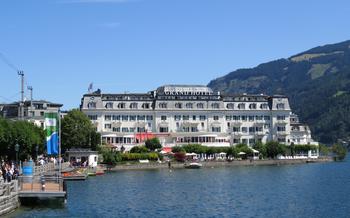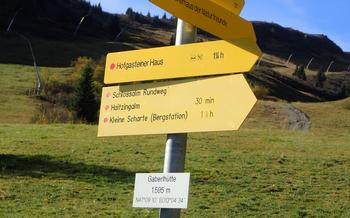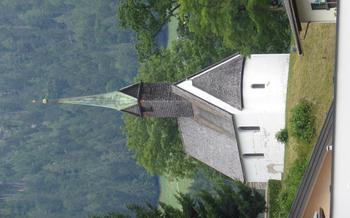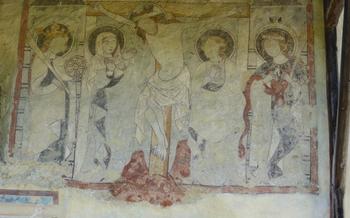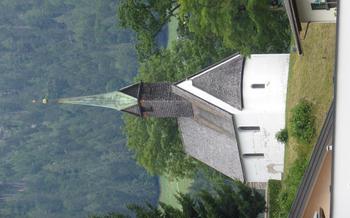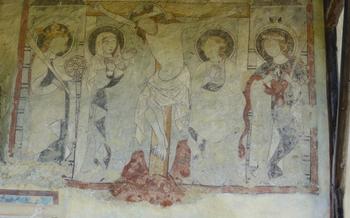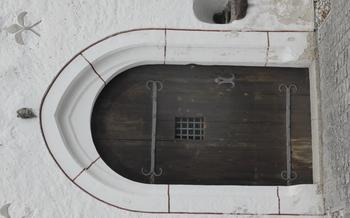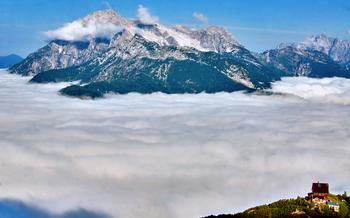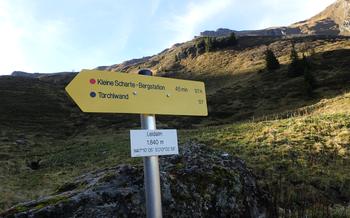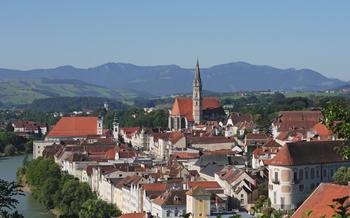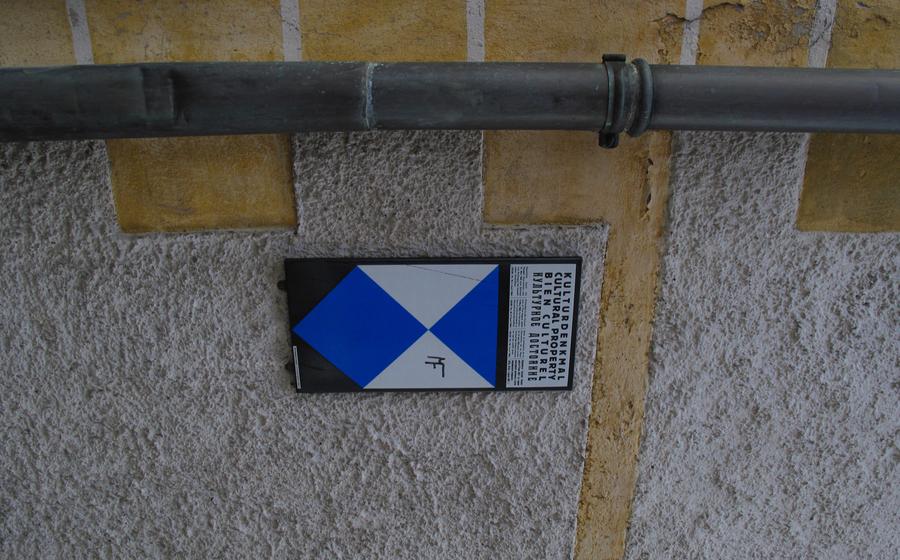
Rauris Valley and its gold panning sites
- A Valley Full of Gold
- A Golden History
- Gold Panning Sites
- The Gold Panning Experience
- Gold Panning Rules and Regulations
- Gold Panning Equipment
- Gold Panning Techniques
- Gold Prospecting
- Gold Mining Museums
- Gold Panning Championships
- Gold Panning Festivals
- Gold Panning Tours
- Gold Panning for Kids
- Insider Tip: Unveiling a Hidden Treasure
A Valley Full of Gold
In the heart of the Austrian Alps lies the Rauris Valley, a picturesque region renowned for its stunning landscapes and rich gold mining history. Gold panning has been a tradition in the valley for centuries, dating back to the Roman era. The valley's gold-bearing rivers and streams have attracted prospectors from all over the world, making Rauris a popular destination for those seeking adventure and the thrill of finding hidden treasure.
Located in the southern part of the Salzburg state, the Rauris Valley is easily accessible by car or public transportation. The valley's main town, also called Rauris, serves as a starting point for exploring the region's gold panning sites. With its charming chalets, historic buildings, and welcoming atmosphere, Rauris offers a glimpse into the valley's rich past and present. The town is home to several goldsmiths and jewelers who showcase their exquisite creations, crafted from the gold found in the local rivers.
Among the valley's many attractions are the Rauris Gold Mines, a fascinating network of tunnels and shafts that offers visitors a glimpse into the history of gold mining in the region. Guided tours of the mines provide an immersive experience, allowing visitors to learn about the techniques used by miners over the centuries and gain insights into the challenges they faced. The Rauris Gold Mines stand as a testament to the ingenuity and perseverance of the miners who toiled underground in search of the precious metal.
A Golden History
The Rauris Valley has a rich and fascinating history of gold panning that dates back to Roman times. In the 15th century, gold mining became a major industry in the region, and the valley was home to some of the most productive gold mines in Europe. The gold rush attracted miners from all over the world, and the Rauris Valley became a melting pot of cultures and languages.
Gold mining played a vital role in the development of the Rauris Valley. It brought wealth and prosperity to the region, and it helped to establish Rauris as a major center of trade and commerce. The gold mines also had a significant impact on the local culture and way of life. The miners developed their own unique traditions and customs, and they left behind a legacy of gold mining artifacts and architecture that can still be seen today.
The gold mines of the Rauris Valley eventually declined in the 19th century, but the tradition of gold panning continued. Today, gold panning is a popular tourist activity in the valley, and it is a great way to learn about the region's rich history.
Gold Panning Sites
The Rauris Valley is home to a number of gold panning sites, each offering a unique experience. Here are some of the most popular sites:
-
Rauris Gold Panning Site: Located in the village of Rauris, this site is a great place for beginners to learn the basics of gold panning. The Rauris Gold Panning Site provides all the necessary equipment and instruction, and there are plenty of opportunities to find gold.
-
Kolm Saigurn Gold Panning Site: Situated in the Kolm Saigurn Valley, this site is known for its beautiful scenery and abundant gold deposits. The Kolm Saigurn Gold Panning Site is accessible by foot or by car, and there are several guided tours available.
-
Seidlwinkl Gold Panning Site: Located near the village of Seidlwinkl, this site is a popular spot for experienced gold panners. The Seidlwinkl Gold Panning Site is known for its challenging terrain and the possibility of finding large gold nuggets.
-
Hollersbach Gold Panning Site: Situated in the village of Hollersbach, this site is a great option for families with children. The Hollersbach Gold Panning Site offers a variety of activities for kids, including gold panning lessons and panning for gold in a specially designed children's area.
-
Gastein Valley Gold Panning Site: Located in the Gastein Valley, this site is known for its stunning scenery and the opportunity to pan for gold in a variety of locations, including rivers, streams, and lakes. The Gastein Valley Gold Panning Site is accessible by car or by public transportation.
The Gold Panning Experience
Gold panning is an exciting and rewarding activity that can be enjoyed by people of all ages. The process is relatively simple: find a spot with a likely concentration of gold, dig up some material, and pan it in water to separate the gold from the other sediment.
When you first start panning, it's important to set realistic expectations. Don't expect to find a fortune overnight. Even experienced panners can go for days without finding anything. The key is to be patient and persistent.
The most challenging aspect of gold panning is learning to identify gold in the pan. Gold is a very dense metal, so it will sink to the bottom of the pan. However, it can be difficult to distinguish between gold and other heavy minerals, such as pyrite (fool's gold).
If you're not sure whether you've found gold, it's best to consult with an experienced panner or take your findings to a local jeweler.
Despite the challenges, gold panning can be a very rewarding experience. There's nothing quite like the feeling of finding your first speck of gold. And even if you don't find any gold, you'll still have a great time enjoying the outdoors and learning about the history of gold mining.
Gold Panning Rules and Regulations
Gold panning in Austria is governed by specific rules and regulations aimed at preserving the environment, protecting cultural heritage, and ensuring the safety of individuals. To engage in gold panning activities, you must obtain a permit from the local mining authority, which can be purchased at designated offices or online. The permit typically includes information about the permitted areas, panning methods, and responsible practices.
It's crucial to adhere to the regulations regarding gold panning to avoid conflicts with authorities and ensure the sustainability of this activity. These regulations may include restrictions on the use of heavy machinery, prohibitions against panning in protected areas or private property, and limitations on the amount of gold that can be extracted.
Responsible gold panning practices involve minimizing environmental impact by avoiding the use of harmful chemicals, restoring the panning site to its original condition, and respecting the rights of other individuals who may be panning in the same area.
Violating gold panning regulations can result in penalties, including fines or even criminal charges. It's important to familiarize yourself with the rules and regulations before engaging in gold panning activities to ensure a safe and enjoyable experience.
Gold Panning Equipment
Gold panning requires some basic equipment to get started. The most important item is a gold pan, which is a shallow, conical pan used to separate gold from other materials. Gold pans come in different sizes and materials, but a 12-inch pan is a good size for beginners.
Other essential equipment includes a shovel for digging up material to pan, a classifier or sieve for removing large rocks and debris, a tweezers or small forceps for picking up gold flakes, and a magnifying glass for examining your findings.
You can purchase gold panning equipment online or at specialty outdoor stores. When choosing equipment, look for durable, high-quality materials that will last. It's also important to choose the right size and type of equipment for your specific needs.
Here are some tips for choosing gold panning equipment:
- Choose a gold pan that is the right size for you. A 12-inch pan is a good size for beginners, but you may want a larger or smaller pan depending on your needs.
- Look for a gold pan made of durable materials, such as stainless steel or plastic.
- Choose a classifier or sieve with the right size holes for your needs. A classifier with 1/4-inch holes is a good starting point.
- Tweezers or small forceps are essential for picking up gold flakes. Choose a pair that is comfortable to use and has a good grip.
- A magnifying glass is helpful for examining your findings. Choose a magnifying glass with a magnification of at least 10x.
Once you have the right equipment, you're ready to start panning for gold in the Rauris Valley!
Gold Panning Techniques
Gold panning techniques have evolved over centuries, with each prospector developing their own unique methods. However, there are a few basic techniques that are essential for success.
The most common technique is called "panning." This involves filling a pan with water and sediment from the riverbed and then swirling the pan in a circular motion. The heavier gold particles will sink to the bottom of the pan, while the lighter sediment will be washed away.
Another technique is called "sluicing." This involves using a sluice box, which is a long, narrow box with a series of riffles (cleats) inside. Water and sediment are fed into the sluice box, and the gold particles are caught in the riffles.
A third technique is called "dredging." This involves using a machine to suck up sediment from the riverbed and then separate the gold from the sediment using a variety of methods.
The best technique for you will depend on the location you are panning in and the type of equipment you have. If you are panning in a river with a lot of sediment, you may want to use a sluice box or a dredge. If you are panning in a smaller stream or creek, you may be able to get by with just a pan.
No matter what technique you use, the key to success is to be patient and persistent. Gold panning can be a slow process, and it can take time to find even a small amount of gold. But if you stick with it, you may be rewarded with the thrill of finding your own gold nuggets.
Gold Prospecting
Gold prospecting is an exciting hobby that combines adventure, history, and the thrill of discovery. In the Rauris Valley, you can try your hand at gold prospecting, a more advanced form of gold panning that involves exploring larger areas and using more sophisticated techniques to find gold deposits.
To start gold prospecting, you'll need some basic equipment, including a gold pan, a shovel, and a classifier. You can purchase these items at local gold panning shops or online. Once you have your equipment, you can start searching for gold-bearing areas. Look for places with visible gold, such as stream beds, riverbanks, and old mine sites.
When you find a promising spot, start by digging a hole or trench. Use your shovel to remove the overburden, which is the top layer of soil and rock that covers the gold-bearing material. Once you reach the gold-bearing material, use your classifier to separate the gold from the other materials.
Gold prospecting requires patience and persistence, but it can be a rewarding hobby. With a little luck and skill, you may be able to find your own gold nuggets or even strike it rich!
Gold Mining Museums
The Rauris Valley is home to several gold mining museums that offer visitors a fascinating glimpse into the history of gold mining in the region. These museums showcase a variety of exhibits, including mining equipment, gold nuggets, and historical documents. Visitors can learn about the techniques used by miners in the past and the challenges they faced.
One of the most popular gold mining museums in the valley is the Goldbergbaumuseum in Rauris. This museum is located in a former gold mine and features a variety of exhibits on the history of gold mining in the region. Visitors can see mining equipment, learn about the different techniques used by miners, and even try their hand at panning for gold.
Another popular museum is the Goldwaschmuseum in Kolm Saigurn. This museum is located in a former gold panning site and features exhibits on the history of gold panning in the valley. Visitors can learn about the different panning techniques used by miners and even try their hand at panning for gold in a specially designed panning area.
These museums are a great way to learn about the history of gold mining in the Rauris Valley and to gain a deeper appreciation for the region's rich mining heritage.
Gold Panning Championships
The World Gold Panning Championships is a prestigious event that attracts gold panners from all corners of the globe. Held annually in different locations worldwide, these championships showcase the skills and techniques of the world's best gold panners.
The championships have a long and illustrious history, dating back to 1978 when they were first held in California, USA. Since then, the event has grown in popularity, with hundreds of competitors participating each year.
The format of the championships is simple yet challenging. Competitors must pan for gold in a designated area, and the one who finds the most gold within a set time limit is declared the winner. The competition is fierce, and the atmosphere is electric as panners race against time to find as much gold as possible.
The next World Gold Panning Championships will be held in Bischofshofen, Austria, from July 15-22, 2023. This will be the first time that the championships have been held in Austria, and it is sure to be a memorable event.
If you are a skilled gold panner or simply want to witness the excitement of the championships, mark your calendar and head to Bischofshofen in July 202You won't be disappointed!
Gold Panning Festivals
The Rauris Valley is home to several gold panning festivals that celebrate the region's rich gold mining heritage. These festivals offer a unique opportunity to experience the excitement of gold panning and learn about the history and culture of the valley.
The most famous gold panning festival in the Rauris Valley is the Rauris Gold Panning Festival, which takes place every year in August. The festival features a variety of gold panning competitions, as well as live music, food, and family-friendly activities.
Another popular gold panning festival is the Goldwaschfest im Raurisertal, which takes place in September. This festival offers a more relaxed atmosphere, with a focus on education and fun. Visitors can learn about the history of gold panning in the valley and try their hand at panning for gold themselves.
Gold panning festivals are a great way to experience the culture and heritage of the Rauris Valley. They offer a fun and educational opportunity for people of all ages to learn about gold panning and the history of the region.
Gold Panning Tours
For those who want a more immersive and hassle-free gold panning experience, several guided tours are available in the Rauris Valley. These tours typically include transportation to and from the gold panning site, all necessary equipment, and expert instruction from experienced gold panners. Some tours also offer additional activities such as hiking, fishing, and sightseeing, making them a great option for those who want to make a day of it.
When choosing a gold panning tour, it is important to consider your skill level, budget, and interests. Some tours are designed for beginners, while others are more suitable for experienced panners. Prices vary depending on the length and complexity of the tour. It is also a good idea to read reviews and recommendations from other travelers to get an idea of what to expect.
Guided tours are a great way to learn about the history and techniques of gold panning while also having the opportunity to find some gold for yourself. With the help of an experienced guide, you will increase your chances of success and have a more enjoyable experience overall.
Gold Panning for Kids
Introducing children to the world of gold panning is an enriching experience that can spark a lifelong interest in geology, nature, and history. The Rauris Valley offers several opportunities for kids to learn about and try their hand at gold panning. Many gold panning sites are accessible and family-friendly, with shallow waters and gentle currents. Guided tours specifically designed for children are also available, providing a safe and educational environment for young prospectors. These tours often include hands-on activities, such as panning for gold, learning about gold mining history, and panning for gemstones. Gold panning is a fun and educational activity that allows children to connect with nature, learn about history, and discover the joy of finding treasure. It's an excellent way to spend quality time with your family while creating lasting memories. Just remember to supervise children closely, especially near water, and ensure they follow safety guidelines.
Insider Tip: Unveiling a Hidden Treasure
In the heart of the Rauris Valley, nestled amidst towering peaks and cascading waterfalls, lies a hidden gold panning spot known only to locals. This secluded haven offers a unique opportunity to experience the thrill of gold panning in a tranquil and pristine setting, away from the crowds.
To reach this secret spot, follow the winding trails that lead deep into the valley, passing lush meadows and ancient forests. As you venture further, the sound of rushing water grows louder, guiding you towards a secluded stream. Here, among the sparkling waters and glistening pebbles, lies your golden treasure waiting to be discovered.
Finding your own secret gold panning spots requires a keen eye and a willingness to explore. Observe the terrain, look for signs of gold, and don't be afraid to venture off the beaten path. Remember, the most rewarding discoveries are often hidden in the most unexpected places.
As you embark on your gold panning adventure, it's essential to respect the environment and leave no trace behind. Practice responsible gold panning by minimizing your impact on the natural surroundings. Handle the delicate ecosystem with care, and always dispose of your waste properly.
The rewards of finding your own gold are immeasurable. It's not just about the material wealth but the sense of accomplishment and the joy of discovering a hidden treasure. Embrace the spirit of adventure, immerse yourself in the beauty of the Rauris Valley, and let the golden allure guide you to your own secret panning spot.
